
Cisco Video Surveillance 2600 IP Camera
User Guide
Model
Americas Headquarters
Cisco Systems, Inc. 170 West Tasman Drive
San Jose, CA
USA http://www.cisco.com Tel: 408
800
Text Part Number:

Cisco Video Surveillance 2600 IP Camera
User Guide
Model
Americas Headquarters
Cisco Systems, Inc. 170 West Tasman Drive
San Jose, CA
USA http://www.cisco.com Tel: 408
800
Text Part Number:
NOTICE. ALL STATEMENTS, INFORMATION, AND RECOMMENDATIONS IN THIS MANUAL ARE BELIEVED TO BE ACCURATE BUT ARE PRESENTED
WITHOUT WARRANTY OF ANY KIND, EXPRESS OR IMPLIED. USERS MUST TAKE FULL RESPONSIBILITY FOR THEIR APPLICATION OF ANY PRODUCTS.
THE SOFTWARE LICENSE AND LIMITED WARRANTY FOR THE ACCOMPANYING PRODUCT ARE SET FORTH IN THE INFORMATION PACKET THAT
SHIPPED WITH THE PRODUCT AND ARE INCORPORATED HEREIN BY THIS REFERENCE. IF YOU ARE UNABLE TO LOCATE THE SOFTWARE LICENSE
OR LIMITED WARRANTY, CONTACT YOUR CISCO REPRESENTATIVE FOR A COPY.
The Cisco implementation of TCP header compression is an adaptation of a program developed by the University of California, Berkeley (UCB) as part of UCB???s public domain version of the UNIX operating system. All rights reserved. Copyright ?? 1981, Regents of the University of California.
NOTWITHSTANDING ANY OTHER WARRANTY HEREIN, ALL DOCUMENT FILES AND SOFTWARE OF THESE SUPPLIERS ARE PROVIDED ???AS IS??? WITH
ALL FAULTS. CISCO AND THE
LIMITATION, THOSE OF MERCHANTABILITY, FITNESS FOR A PARTICULAR PURPOSE AND NONINFRINGEMENT OR ARISING FROM A COURSE OF
DEALING, USAGE, OR TRADE PRACTICE.
IN NO EVENT SHALL CISCO OR ITS SUPPLIERS BE LIABLE FOR ANY INDIRECT, SPECIAL, CONSEQUENTIAL, OR INCIDENTAL DAMAGES, INCLUDING,
WITHOUT LIMITATION, LOST PROFITS OR LOSS OR DAMAGE TO DATA ARISING OUT OF THE USE OR INABILITY TO USE THIS MANUAL, EVEN IF CISCO
OR ITS SUPPLIERS HAVE BEEN ADVISED OF THE POSSIBILITY OF SUCH DAMAGES.
CCDE, CCENT, Cisco Eos, Cisco Lumin, Cisco Nexus, Cisco StadiumVision, Cisco TelePresence, Cisco WebEx, the Cisco logo, DCE, and Welcome to the Human Network are trademarks; Changing the Way We Work, Live, Play, and Learn and Cisco Store are service marks; and Access Registrar, Aironet, AsyncOS, Bringing the Meeting To You, Catalyst, CCDA, CCDP, CCIE, CCIP, CCNA, CCNP, CCSP, CCVP, Cisco, the Cisco Certified Internetwork Expert logo, Cisco IOS, Cisco Press, Cisco Systems, Cisco Systems Capital, the Cisco Systems logo, Cisco Unity, Collaboration Without Limitation, EtherFast, EtherSwitch, Event Center, Fast Step, Follow Me Browsing, FormShare, GigaDrive, HomeLink, Internet Quotient, IOS, iPhone, iQuick Study, IronPort, the IronPort logo, LightStream, Linksys, MediaTone, MeetingPlace, MeetingPlace Chime Sound, MGX, Networkers, Networking Academy, Network Registrar, PCNow, PIX, PowerPanels, ProConnect, ScriptShare, SenderBase, SMARTnet, Spectrum Expert, StackWise, The Fastest Way to Increase Your Internet Quotient, TransPath, WebEx, and the WebEx logo are registered trademarks of Cisco Systems, Inc. and/or its affiliates in the United States and certain other countries.
All other trademarks mentioned in this document or website are the property of their respective owners. The use of the word partner does not imply a partnership relationship between Cisco and any other company. (0809R)
Cisco Video Surveillance 2600 IP Camera User Guide
Copyright ?? 2010 Cisco Systems, Inc. All rights reserved.

Preface
Overview
This document, Cisco Video Surveillance IP Camera User Guide provides information about installing, configuring, using, managing, and troubleshooting the Cisco Video Surveillance 2600 IP Camera model, model
Organization
This manual is organized as follows:
Obtaining Documentation, Obtaining Support, and Security
Guidelines
For information about obtaining documentation, submitting a service request, and gathering additional information, see the monthly What???s New in Cisco Product Documentation, which also lists all new and revised Cisco technical documentation, at:
http://www.cisco.com/en/US/docs/general/whatsnew/whatsnew.html
Subscribe to the What???s New in Cisco Product Documentation as a Really Simple Syndication (RSS) feed and set content to be delivered directly to your desktop using a reader application. The RSS feeds are a free service and Cisco currently supports RSS version 2.0.
Cisco Video Surveillance 2600 IP Camera User Guide

Preface
Cisco Video Surveillance 2600 IP Camera User Guide


Contents
Cisco Video Surveillance 2600 IP Camera User Guide

C H A P T E R 1
Overview
This chapter provides an overview of the Cisco Video Surveillance IP Cameras and its features. It includes these topics:
???IP Camera Overview, page
Features
The Cisco Video Surveillance 2600 IP Camera offers a
In addition, the device provides networking and security capabilities, including multicast support,
The IP camera includes the following key features:
???
???
???
???Privacy
???Day/night switch
???
???
???
Cisco Video Surveillance 2600 IP Camera User Guide

Chapter 1 Overview
IP Camera Overview
???Motion
???Flexible
???Syslog
???IP address
???
???DHCP
???Network Time Protocol (NTP)
???Support for C and CS mount
???
???Power
???Camera access
???Cisco Media
IP Camera Overview
The following sections provide information about the Cisco Video Surveillance IP Camera:
???DC Auto Iris Lens Connector Pinouts, page
Physical Details
The IP camera includes a reset button,
Figure
Cisco Video Surveillance 2600 IP Camera User Guide

Chapter 1 Overview
IP Camera Overview
Figure
Cisco Video Surveillance 2600 IP Camera User Guide

Chapter 1 Overview
IP Camera Overview
Figure
Figure
Cisco Video Surveillance 2600 IP Camera User Guide

Chapter 1 Overview
IP Camera Overview
Figure
Figure
Cisco Video Surveillance 2600 IP Camera User Guide
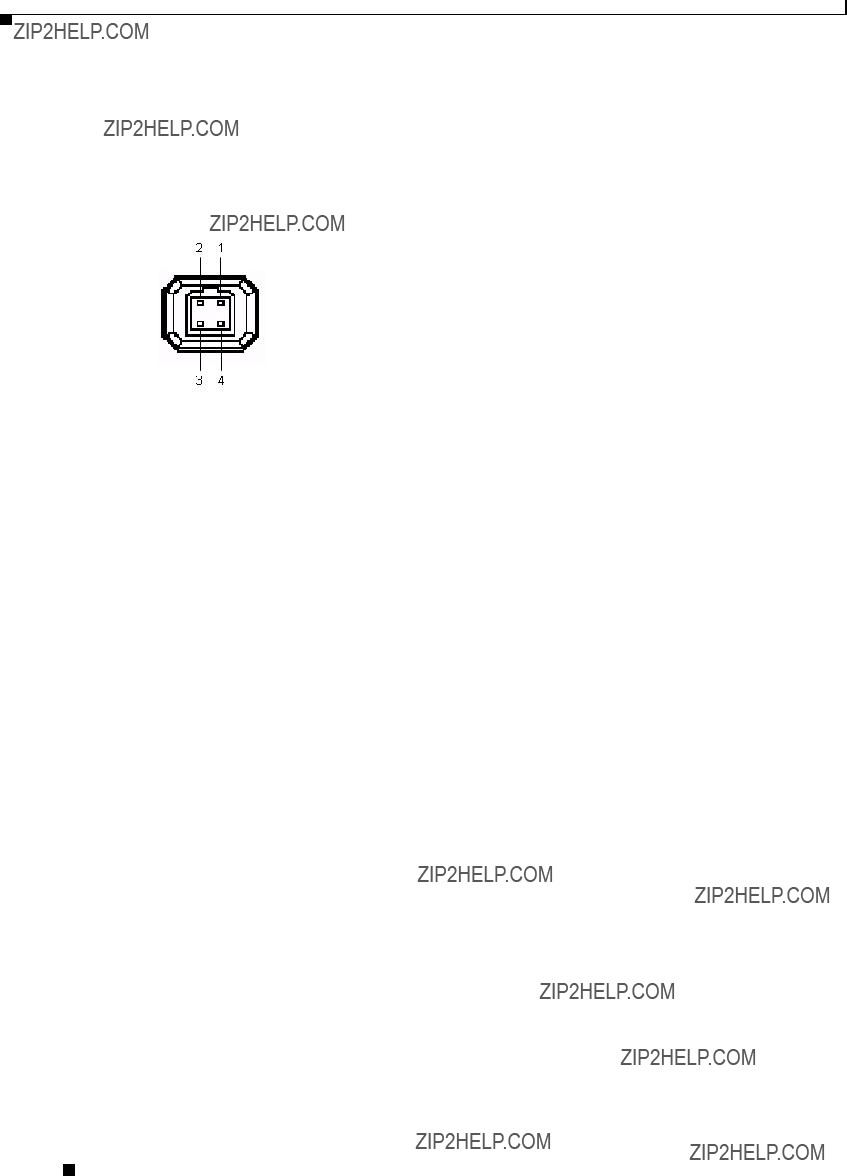
Chapter 1 Overview
IP Camera Overview
DC Auto Iris Lens Connector Pinouts
Figure
Figure
Package Contents
The the Cisco Video Surveillance IP Camera package includes these items:
???Cisco Video Surveillance 2600 IP Camera Quick Start Guide (qty. 1)
???Regulatory Compliance and Safety Information document (qty. 1)
???Camera (qty. 1)
???0.9 mm Allen wrench (qty. 1)
???Terminal block for power connection (qty. 1)
???
???
Cisco Video Surveillance 2600 IP Camera User Guide
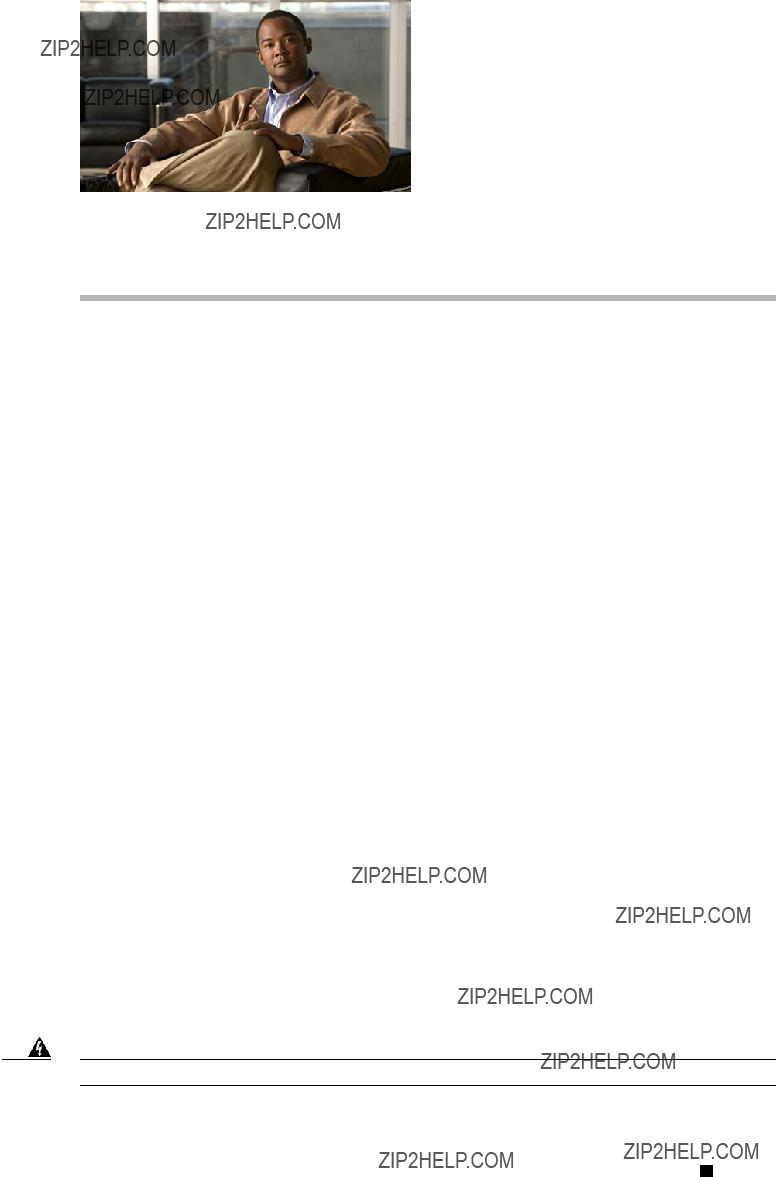
C H A P T E R 2
Getting Started
This chapter provides instructions for installing and performing the initial setup of the Cisco Video Surveillance IP Camera. It also describes how to access the IP camera through a web browser so that you can configure it or view video from it, and how to perform other important tasks.
This chapter includes these topics:
???Installing the Cisco Video Surveillance IP Camera, page
???Performing the Initial Setup of the IP Camera, page
???Accessing the IP Camera Windows, page
???Adjusting Back Focus on the IP Camera, page
???Powering the IP Camera On or Off, page
???Resetting the IP Camera, page
???Cleaning the IP Camera, page
Installing the Cisco Video Surveillance IP Camera
This section describes how to install the Cisco Video Surveillance IP camera. Before installing, review these guidelines:
???The IP camera requires a network cable and a connection to a standard 10/100BaseT hub, router, or switch. To power the IP camera with Power over Ethernet (PoE), a switch must be 802.3af compliant.
???If you are using the IP camera on a network connection that does not provide PoE, you must use an external 12 V power adapter.
???If you are using an external speaker, microphone, input device, output device, or control device, you must configure additional settings after installing and performing the initial set up of the IP camera before the external device can fully operate. For detailed information about these settings, see Chapter 3, ???Configuring and Managing the IP Camera.???
???If you do not connect an external device (speaker, microphone, analog video display, input device, output device, or control device) when you perform the following installation procedure, you can install any of these devices later.
Warning Installation of the equipment must comply with local and national electrical codes. Statement 1074
Cisco Video Surveillance 2600 IP Camera User Guide

Chapter 2 Getting Started
Installing the Cisco Video Surveillance IP Camera
Warning The power supply must be placed indoors. Statement 331
Note If you use the IP camera outdoors, place the camera and the power supply in a suitable NEMA enclosure.
Warning This product requires
Warning This product must be connected to a
Warning The
Caution Inline power circuits provide current through the communication cable. Use a minimum 24AWG communication cable.
To install the IP camera, follow the steps in Table
Cisco Video Surveillance 2600 IP Camera User Guide

Chapter 2 Getting Started
Installing the Cisco Video Surveillance IP Camera
Cisco Video Surveillance 2600 IP Camera User Guide

Chapter 2 Getting Started
Performing the Initial Setup of the IP Camera
After you install the IP camera, follow the instructions in the ???Performing the Initial Setup of the IP Camera??? section on page
Performing the Initial Setup of the IP Camera
After you install IP camera, or after you perform a factory reset procedure, you must access the IP camera and make initial configuration settings. These settings include administrator and root passwords, and whether the IP camera can be accessed through an HTTP connection in addition to the default HTTPS (HTTP secure) connection.
Cisco Video Surveillance 2600 IP Camera User Guide

Chapter 2 Getting Started
Performing the Initial Setup of the IP Camera
To make these configuration settings, you connect to the IP camera from any PC that is on the same network as the IP camera. The PC must meet these requirements:
???Operating
???
In addition, you must know the IP address of the IP camera. By default, when the IP camera powers on, it attempts to obtain an IP address from a DHCP server in your network. If the camera cannot obtain an IP address through DCHP within 90 seconds, it uses a default IP address of 192.168.0.100.
To connect to the IP camera for the first time and make initial configuration settings, perform the following steps. You can change these configuration settings in the future as described in the ???Initialization Window??? section on page
Procedure
Step 1 Start Internet Explorer, enter HTTPS://ip_address in the address field, and press Enter.
Replace ip_address with the IP address that the IP camera obtained through DHCP or, if the camera is unable to obtain this IP address, enter 192.168.0.100.
The Account window appears.
Step 2 In the Set Password and Verify Password fields in the Admin column, enter a password for the IP camera administrator.
You must enter the same password in both fields. The password is case sensitive and must contain at least eight characters, which can be letters, numbers, and special characters, but no spaces. Special characters are: ! " # $ % & ' ( ) * + ,
Step 3 In the Set Password and Verify Password fields in the Root column, enter a password that is used when accessing the IP camera through a Secure Shell (SSH) connection.
You must enter the same password in both fields. The password is case sensitive and must contain at least eight characters, which can be letters, numbers, and special characters, but no spaces. Special characters are: ! " # $ % & ' ( ) * + ,
You use the root password if you need to troubleshoot the IP camera through a SSH connection with the assistance of the Cisco Technical Assistance Center.
Step 4 In the HTTP area, click the HTTP radio button if you want to allow both HTTP and HTTPS connections to the IP camera.
The default setting is HTTPS, which allows only HTTPS (secure) connections to the IP camera.
Step 5 Click Apply.
The IP camera reboots.
Step 6 After the IP camera reboots, start Internet Explorer and, in the Address field, enter the following:
protocol://ip_address
where:
???protocol is HTTPS or HTTP. (You can use HTTP only if you enabled it in Step 4.)
???ip_address is the IP address that you used in Step 1.
Step 7 If you are prompted to install ActiveX controls, which are required to view video from the IP camera, follow the
The Main window appears and video from the IP camera starts playing automatically.
You can take these actions in the Main window:
Cisco Video Surveillance 2600 IP Camera User Guide

Chapter 2 Getting Started
Accessing the IP Camera Windows
???Click the Setup link to access configuration menus for the camera. For detailed information about these menus, see Chapter 3, ???Configuring and Managing the IP Camera.???
???Click the Home link to view and control live video from the camera. For detailed information about these actions, see Chapter 4, ???Viewing Live Video.???
???Click the Logout button to exit the window.
Accessing the IP Camera Windows
After you perform the initial configuration as described in the ???Performing the Initial Setup of the IP Camera??? section on page
You access these windows by connecting to the IP camera from any PC that is on the same network as the IP camera and that meets these requirements:
???Operating
???
You need this information to access the IP camera windows:
???IP address of the IP camera. By default, the IP camera attempts to obtain an IP address from a DHCP server in your network. If the IP camera cannot obtain an IP address through DHCP within 90 seconds of powering up or resetting, it uses the default IP address of 192.168.0.100.
???Port number, if other than the default value. Default port numbers for the IP camera are 443 for HTTPS and 80 for HTTP. The IP camera administrator can enable an alternative HTTPS port and an alternative HTTP port as described in the ???Advanced Setup Window??? section on page
???Your user name and password for the IP camera. The IP camera administrator configures user names and passwords as described in the ???Users Window??? section on page
To access the IP camera windows, follow these steps:
Procedure
Step 1 Start Internet Explorer and enter the following in the address field:
protocol://ip_address:port_number
where:
???protocol is HTTPS for a secure connection or HTTP for a
???ip_address is the IP address of the IP camera. The default IP address is 192.168.0.100.
???port_number is the port number that is used for HTTPS or HTTP connections to the IP camera. You do not need to enter a port number if you are connecting through the default HTTPS port 443 or the default HTTP port 80.
For example,
???Enter the following for a secure connection if the IP address is 192.168.0.100 and the HTTPS port number is 443:
https://192.168.0.100
Cisco Video Surveillance 2600 IP Camera User Guide

Chapter 2 Getting Started
Adjusting Back Focus on the IP Camera
???Enter the following for a secure connection if the IP address is 203.70.212.52 and the HTTPS port number is 1024:
https://203.70.212.52:1024
???Enter the following for a
http://203.70.212.52
???Enter the following for a
http://203.70.212.52:1024
Step 2 Enter your IP camera user name and password when prompted, then click OK.
To log in as the IP camera administrator, enter the user name admin (all lower case) and the password that is configured for the administrator. To log in as a user, enter the user name and password that are configured for the user.
The Main window appears and video from the IP camera starts playing automatically. You can take these actions in the Main window:
???Click the Setup link to access configuration menus for the camera. For detailed information about these menus, see Chapter 3, ???Configuring and Managing the IP Camera.???
???Click the Home link to view and control live video from the camera. For detailed information about these actions, see Chapter 4, ???Viewing Live Video.???
???Click the Logout button to exit the window.
Adjusting Back Focus on the IP Camera
To obtain the sharpest image from the camera, you may need to adjust its back focus. This adjustment is useful if the focus control on a lens does not allow you to obtain a sharp enough image.
To adjust the back focus, perform the following steps while viewing video from the camera. For information about viewing video, see Chapter 4, ???Viewing Live Video.???
Procedure
Step 1 With a lens attached to the IP camera, use the 0.9 mm Allen wrench that is supplied with the IP camera to loosen the focus ring hex screw.
This screw is on the bottom of the camera just behind the focus ring.
Step 2 Adjust the back focus by aiming the IP camera at an object that is at least 15 feet (4.5 meters) away and rotating the focus ring to obtain a clear image as follows:
???For a
???For a zoom lens, ensure that the object of interest remains in focus throughout the entire zoom range of the lens.
Step 3 Use the Allen wrench to tighten the focus ring hex screw.
Cisco Video Surveillance 2600 IP Camera User Guide

Chapter 2 Getting Started
Powering the IP Camera On or Off
Powering the IP Camera On or Off
The IP camera does not include an on/off switch. You power it on or off by connecting it to or disconnecting it from a power source. When you power off the IP camera, it retains configuration information.
To power on the IP camera, take either of these actions:
???Use an STP category 5 or higher network cable to connect the IP camera to a network switch that provides 802.3af compliant PoE
???Use an external 12 V power adapter to connect the IP camera to a wall outlet
To power off the IP camera, take either of these actions:
???If the IP camera is receiving PoE, disconnect the network cable
???If the IP camera is receiving power through the power adapter, unplug the adapter from the wall or disconnect it from the camera
Resetting the IP Camera
You reset the IP camera by pressing the Reset button on the rear of the device (see Figure
There are various reset types, as described in Table
You also can perform some reset operations from the Maintenance window as described in the ???Maintenance Window??? section on page

Chapter 2 Getting Started
Cleaning the IP Camera
Cleaning the IP Camera
To clean and IP camera, follow these guidelines:
???To clean the IP camera housing, use a clean, dry, soft cloth to gently wipe the surface of the housing
???To clean the lens, use only tissue paper or solution that is designed for high quality optical lenses.
Cisco Video Surveillance 2600 IP Camera User Guide

Chapter 2 Getting Started
Cleaning the IP Camera

C H A P T E R 3
Configuring and Managing the IP Camera
The Cisco Video Surveillance IP Camera provides configuration windows that you use to configure and manage the IP camera. This chapter explains how to access the configuration windows, describes each window, and provides detailed information about the options that are available in each window.
When configuring the IP camera, be aware of these guidelines:
???You must install and set up the Cisco Video Surveillance IP camera as described in Chapter 2, ???Getting Started,??? before you can access the configuration menus.
???You must be an IP camera administrator or an IP camera user with administrator privileges to access the configuration windows.
???For security, the configuration windows time out after 2 minutes of no activity. If a time out occurs, a
This chapter includes these topics:
???Configuration Overview, page
???Navigating the Configuration Windows, page
???Administration Windows, page
???Audio/Video Windows, page
???Security Windows, page
???Applications Windows, page
Configuration Overview
There are many settings and options that you can configure for the IP camera. The items that you configure depend on several factors, including your camera model, operational requirements, and connected external devices.
Table
Cisco Video Surveillance 2600 IP Camera User Guide

Chapter 3 Configuring and Managing the IP Camera
Configuration Overview
Cisco Video Surveillance 2600 IP Camera User Guide

Chapter 3 Configuring and Managing the IP Camera
Configuration Overview
Cisco Video Surveillance 2600 IP Camera User Guide

Chapter 3 Configuring and Managing the IP Camera
Navigating the Configuration Windows
Navigating the Configuration Windows
After you access the configuration windows as described in the ???Accessing the IP Camera Windows??? section on page
???Navigation
???Basic Setup
The navigation tree always appears. The right area varies depending on the configuration window that you choose from the navigation tree.
You can perform the following activities from when any configuration window is displayed:
???Click the Home link at the top of the Navigation Tree to display live video from the IP camera. For related information, see Chapter 4, ???Viewing Live Video.???
???Click the Logout button to exit the Main window and close your web browser.
???Use the Navigation Tree to access each configuration window. To do so, click the link or the right arrow  next to the link for the group of configuration windows that you want. The name of each associated window appears as a link. Then click the link for the desired window.
next to the link for the group of configuration windows that you want. The name of each associated window appears as a link. Then click the link for the desired window.
To collapse a set of links, click the down arrow  next to the
next to the
The configuration windows are organized as follows:
???Setup
???Basic Setup
???Advanced Setup
???IP Filter
???EAPOL
???Administration
???Users
???Maintenance
???Firmware
???Audio/Video
???Video
???Audio
???Privacy Region
Cisco Video Surveillance 2600 IP Camera User Guide

Chapter 3 Configuring and Managing the IP Camera
Setup Windows
???Security
???Product Process
???Initialization
???Complexity
???Applications
???Mail & FTP
???Motion Detection
???Event
???SNMP
???Alarm I/O Ports
???PTZ
???Status
???System
???Audio Video
???Network
???Syslog & Log
???Video Log
Setup Windows
The Setup windows let you configure a variety of basic and advanced settings for the IP camera, and to designate IP addresses that are allowed or denied access to the IP camera.
The following sections describe the Setup windows in detail:
???Basic Setup Window, page
???Advanced Setup Window, page
???IP Filter Window, page
Basic Setup Window
The Basic Setup window provides options for configuring device and network settings for the IP camera.
To display the Basic Setup window, access the configuration windows as described in the ???Accessing the IP Camera Windows??? section on page
If you change any options except the Current Date/Time in the Basic Setup window, you must click Save to save the changes. To discard the changes, click Cancel before clicking Save. These buttons appear at the bottom of the window. You may need to scroll down to see them.
Cisco Video Surveillance 2600 IP Camera User Guide

Chapter 3 Configuring and Managing the IP Camera
Setup Windows
Table
Table
Cisco Video Surveillance 2600 IP Camera User Guide

Chapter 3 Configuring and Managing the IP Camera
Setup Windows
Advanced Setup Window
The Advanced Setup window provides options for configuring various network and protocol settings for the IP camera.
To display the Advanced Setup window, access the configuration windows as described in the ???Accessing the IP Camera Windows??? section on page
If you change any options in the Advanced Setup window, you must click Save to save the changes. To discard the changes, click Cancel before clicking Save. These buttons appear at the bottom of the window. You may need to scroll down to see them.
Cisco Video Surveillance 2600 IP Camera User Guide

Chapter 3 Configuring and Managing the IP Camera
Setup Windows
Table
Table
Cisco Video Surveillance 2600 IP Camera User Guide

Chapter 3 Configuring and Managing the IP Camera
Setup Windows
Cisco Video Surveillance 2600 IP Camera User Guide

Chapter 3 Configuring and Managing the IP Camera
Setup Windows
IP Filter Window
The IP Filter window provides options for controlling access to the IP camera by designating a list of IP addresses that can access the IP camera and a list of IP addresses that cannot access the IP camera.
To display the IP Filter window, access the configuration windows as described in the ???Accessing the IP Camera Windows??? section on page
If you change any options in the IP Filter window, you must click Save to save the changes. To discard the changes, click Cancel before clicking Save. These buttons appear at the bottom of the window. You may need to scroll down to see them.
Table

Chapter 3 Configuring and Managing the IP Camera
Setup Windows
EAPOL Window
The EAPOL window provides options for configuring Extensible Authentication Protocol Over LANs (EAPOL). This protocol is used to authenticate and control user traffic in an 802.1x network.
To display the EAPOL window, access the configuration windows as described in the ???Accessing the IP Camera Windows??? section on page
If you change any options in the EAPOL window, you must click Save to save the changes. To discard the changes, click Cancel before clicking Save. These buttons appear at the bottom of the window. You may need to scroll down to see them.
Table
Table
Note These options appear if you check the Enable EAPOL check box and then choose
Note These options appear if you check the Enable EAPOL check box and then choose

Chapter 3 Configuring and Managing the IP Camera
Administration Windows
Administration Windows
The Administration windows let you configure IP camera users, reset or restart the IP camera, and upgrade firmware on the IP camera.
The following sections describe the Setup windows in detail:
???Maintenance Window, page
???Firmware Window, page
Users Window
The Users window lets you configure access to the IP camera for the following types of users:
???
???
To display the Users window, access the configuration windows as described in the ???Accessing the IP Camera Windows??? section on page
When you make configuration settings in this window, follow these guidelines:
???If you configure information in a field the Administrator area, click Change in that area or Save at the bottom of the screen to save your changes.
???If you configure information in the User List area, click Add next to the user or Save at the bottom of the screen to save your changes.
???To remove a user, click Delete next to the user. If you delete a user who is logged into the IP camera, the user remains logged in and can continue access the IP camera.
???To discard the changes before you click Change or Save, click Cancel.
???The Save and Cancel buttons appear at the bottom of the window. You may need to scroll down to see them.

Chapter 3 Configuring and Managing the IP Camera
Administration Windows
Table
Table

Chapter 3 Configuring and Managing the IP Camera
Administration Windows
Maintenance Window
The Maintenance window provides options for resetting or restarting the IP camera, saving configuration information from the IP camera, and uploading the configuration information to the IP camera.
Saving and uploading configuration is useful for these activities:
???Configuring multiple IP
???Backing up
To display the Maintenance window, access the configuration windows as described in the ???Accessing the IP Camera Windows??? section on page
Table
Table

Chapter 3 Configuring and Managing the IP Camera
Administration Windows
Firmware Window
The Firmware window lets you view information about the firmware that is installed on the IP camera and upgrade the firmware.
Before you upgrade firmware, download the firmware file to a PC that is accessible on your network and unzip the file if it is zipped. To download firmware, go to this web page:
http://www.cisco.com/en/US/products/ps7307/index.html
After you upgrade firmware, the IP camera restarts automatically. It retains all configuration information.
To display the Firmware window, access the configuration windows as described in the ???Accessing the IP Camera Windows??? section on page
Table
Table

Chapter 3 Configuring and Managing the IP Camera
Audio/Video Windows
Audio/Video Windows
The Audio/Video windows provide options for configuring audio and video from the IP camera.
The following sections describe the Setup windows in detail:
???Privacy Region Window, page
Video Window
The Video window provides options for configuring the video from the IP camera. You can configure settings for the primary and an optional secondary video stream.
Configuring a secondary stream is useful for providing
To display the Video window, access the configuration windows as described in the ???Accessing the IP Camera Windows??? section on page
If you change any options in the Video window, you must click Save to save the changes. To discard the changes, click Cancel before clicking Save. These buttons appear at the bottom of the window. You may need to scroll down to see them.
Table

Chapter 3 Configuring and Managing the IP Camera
Audio/Video Windows
Note These H.264 Settings options appear if you choose Single H.264 Stream, Dual H.264 Streams, or Dual Streams (H.264 + MJPEG) from the Streaming Mode

Chapter 3 Configuring and Managing the IP Camera
Audio/Video Windows
H.264 Settings 2
Note These H.264 Settings 2 options appear if you choose the Dual H.264 Streams from the Streaming Mode
Note These

Chapter 3 Configuring and Managing the IP Camera
Audio/Video Windows
Note These
Note These MPJEG Settings 2 options appear if you choose the Single MJPEG Stream or the Dual Streams (H.264 + MJPEG or

Chapter 3 Configuring and Managing the IP Camera
Audio/Video Windows

Chapter 3 Configuring and Managing the IP Camera
Audio/Video Windows

Chapter 3 Configuring and Managing the IP Camera
Audio/Video Windows

Chapter 3 Configuring and Managing the IP Camera
Audio/Video Windows
Audio Window
The Audio window provides options for enabling and configuring audio that is transmitted to and from the IP camera. You can configure audio for these devices:
???Internal
???External
???External speaker??? You can connect an optional external speaker (available from
To display the Audio window, access the configuration windows as described in the ???Accessing the IP Camera Windows??? section on page
If you change any options in the Audio window, you must click Save to save the changes. To discard the changes, click Cancel before clicking Save. These buttons appear at the bottom of the window. You may need to scroll down to see them.
Table

Chapter 3 Configuring and Managing the IP Camera
Audio/Video Windows
Table
Privacy Region Window
The Privacy Region window provides options for creating up to four
To display the Privacy Region window, access the configuration windows as described in the ???Accessing the IP Camera Windows??? section on page
If you change any options in the Privacy Region window, you must click Apply to save the changes.
Table

Chapter 3 Configuring and Managing the IP Camera
Security Windows
Security Windows
The Security windows provide options for stopping IP camera processes, configuring administrator and root password requirements, and enabling access to the IP camera through HTTP or Secure Shell (SSH) connections.
The following sections describe the Security windows in detail:
???Product Process Window, page
???Initialization Window, page
???Complexity Window, page
Product Process Window
The Product Process window displays the processes that occupy TCP or UDP ports and lets you stop any of these processes.
Take care when stopping processes because some processes are required for the camera to operate properly.
Processes that you stop in this window can restart the next time that you log in to the IP camera. If you delete a required process and the camera stops functioning, exit your web browser and then log back in to the IP camera to restart the process.
To stop any process, click the Delete button that appears to the right of the process.
To make sure that the Product Process window shows the most current information, click the Refresh button.
Table
Initialization Window
The Initialization window lets you configure administrator and root passwords, whether the IP camera can be accessed through an HTTP connection in addition to the default HTTPS (HTTP secure) connection, and whether the IP camera can be accessed through a SSH connection.
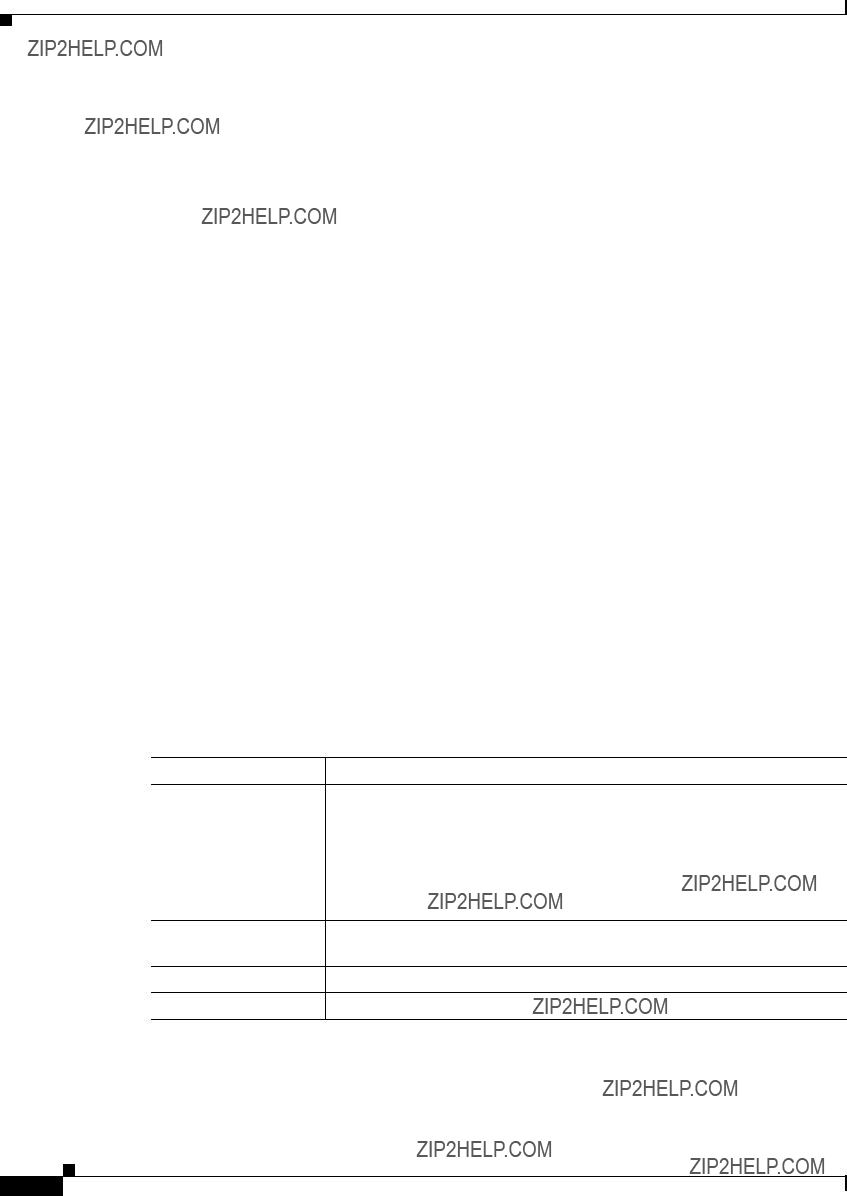
Chapter 3 Configuring and Managing the IP Camera
Security Windows
Table
Table
Complexity Window
The Complexity window provides options for configuring requirements for the IP camera administrator and user passwords.
Table
Table
Password Check 1 Password must contain characters from at least 3 of these categories:
???Lower case letters (a through z)
???Upper case letters (A through Z)
???Digits (0 through 9)
???Special characters (: ! " # $ % & ' ( ) * + ,
Password Check 2 Administrator password cannot include any character that occurs 3 or more times consecutively
Password Check 3 Password cannot be the same as the user name either forward of reversed

Chapter 3 Configuring and Managing the IP Camera
Applications Windows
Applications Windows
The Applications windows provide options for configuring and managing a variety of applications and IP camera activities.
The following sections describe the Applications windows in detail:
???Mail & FTP Window, page
???Motion Detection Window, page
???Alarm I/O Ports Window, page
???PTZ
???Preset Positions Window, page
Mail & FTP Window
When the IP camera detects an event, it can send an
The
???By including a link to an FTP server from which recipients can download the video file to a local PC.
???By including the video file as an attachment that recipients can view using a standard media player. The file name is
???Camera_name is the name of the IP camera, as configured in the Camera Name field in the Basic Setup window.
???Event_name describes the event that caused the alert. For motion detection events, this field is the name of the video field area in which motion was detected (for example, Window 2). For input events, this field is input1 or input2, depending on which input port the event was detected.
???yymmdd is the
???hhmmss is the, hours, minutes, and seconds at which the event occurred.
???xxx is the format of the file (asf, mp4, or 3gp), as configured in the Video Format
Note A large video file may exceed the maximum file size for
By default, the video in a video file starts when an event starts and ends 5 seconds after the event ends. You can designate that additional video be included before and after an event as described in the ???Event Window??? section on page

Chapter 3 Configuring and Managing the IP Camera
Applications Windows
To display the Mail & FTP window, access the configuration windows as described in the ???Accessing the IP Camera Windows??? section on page
If you change any options in the Mail & FTP window, you must click Save to save the changes. To discard the changes, click Cancel before clicking Save. These buttons appear at the bottom of the window. You may need to scroll down to see them.
Table
Table

Chapter 3 Configuring and Managing the IP Camera
Applications Windows
Motion Detection Window
The Motion Detection window allows you to configure up to four regions in a video field. The IP camera monitors activity in each region. If activity exceeds a configured threshold in any of these regions, the IP camera generates an alert and takes the actions that are configured in the Event window. (See the ???Event Window??? section on page
To display the Motion Detection window, access the configuration windows as described in the ???Accessing the IP Camera Windows??? section on page
The Motion Detection window displays the current video from the IP camera and provides several configuration options. If you are prompted to install ActiveX controls when trying to access this window, follow the

Chapter 3 Configuring and Managing the IP Camera
Applications Windows
If you change any options in the Motion Detection window, you must click Apply to save the changes.
Note In addition to moving objects, motion detection can be triggered by rapid changes in lighting conditions or by movement of the IP camera itself.
Table
Table
Event Window
The Event window provides options for configuring how the IP camera handles events. An event is either of the following:
???Motion that the IP camera detects. For related information about motion detection, see the ???Motion Detection Window??? section on page
???A change of state from low to high or from high to low on an input port of the IP camera. For related information about input ports, see the ???Alarm I/O Ports Window??? section on page

Chapter 3 Configuring and Managing the IP Camera
Applications Windows
When an event occurs, it triggers the IP camera to take certain configured actions. For example, an event can cause the IP camera to send a notification
The Event window allows you to designate up to 10 schedules. If an event takes place within a designated schedule, the IP camera takes the actions that you configure.
To display the Event window, access the configuration windows as described in the ???Accessing the IP Camera Windows??? section on page
If you change any options in the Event window, except deleting an event from the event schedule list, you must click Save to save the changes. To discard the changes, click Cancel before clicking Save. These buttons appear at the bottom of the window. You may need to scroll down to see them.
Table
Table

Chapter 3 Configuring and Managing the IP Camera
Applications Windows
Note These Attachment options appear if you enable the Trigger Event option and choose the

Chapter 3 Configuring and Managing the IP Camera
Applications Windows
SNMP Window
The SNMP window allows you to configure Simple Network Management Protocol (SNMP) settings for the IP camera. These settings can help you manage complex networks by sending messages to different devices on the network.
To display the SNMP window, access the configuration windows as described in the ???Accessing the IP Camera Windows??? section on page
If you change any options in the SNMP window, you must click Save to save the changes. To discard the changes, click Cancel before clicking Save. These buttons appear at the bottom of the window. You may need to scroll down to see them.
Table
Table

Chapter 3 Configuring and Managing the IP Camera
Applications Windows
Alarm I/O Ports Window
The Alarm I/O Ports window allows you to configure various options for the two input and two output ports on the IP camera. A state change of an input ports triggers a camera to take configured actions. Output ports send relays that can control external devices, such as alarms or door switches.
To display the Alarm I/O Ports window, access the configuration windows as described in the ???Accessing the IP Camera Windows??? section on page
If you change any options in the Alarm I/O Ports window, you must click Save to save the changes. To discard the changes, click Cancel before clicking Save. These buttons appear at the bottom of the window. You may need to scroll down to see them.
Table

Chapter 3 Configuring and Managing the IP Camera
Applications Windows
PTZ
The PTZ
This window also provides options for configuring a patrol sequence, or sequence, for the IP camera. A sequence consists of up to 20 steps, each of which causes the camera to move to a designated position and remain in the position for 30 seconds.
To display the PTZ
If you change any options in the PTZ
Table
Preset Position
Note The Preset Position option appears if you check the Enable External PTZ check box.

Chapter 3 Configuring and Managing the IP Camera
Applications Windows
Preset Positions Window
If you click the Set Preset Position button in the PTZ
To use the options that are in this window, the IP camera must be installed with a motorized zoom/focus lens in a pan/tilt mount that supports the Pelco D protocol.
If you are prompted to install ActiveX controls when trying to access this window, follow the
If you change any options in the Preset window, you must click Save to save the changes. To exit this window, click Back.
Table
Table

Chapter 3 Configuring and Managing the IP Camera
Applications Windows
Table

Chapter 3 Configuring and Managing the IP Camera
Status Windows
Status Windows
The Status windows provide options for viewing and managing a variety of system information. The following sections describe the Applications windows in detail:
???Audio/Video Window, page
???Syslog & Log Window, page
???Video Log Window, page
System Window
The System window displays information about the IP camera.
To display the System window, access the configuration windows as described in the ???Accessing the IP Camera Windows??? section on page
To make sure that the System window shows the most current information, click the Refresh button. Table

Chapter 3 Configuring and Managing the IP Camera
Status Windows
Audio/Video Window
The Audio/Video window displays information about the audio and video streams from the IP camera. You configure audio options as described in the ???Audio Window??? section on page
To display the Audio/Video window, access the configuration windows as described in the ???Accessing the IP Camera Windows??? section on page
To make sure that the Audio/Video window shows the most current information, click the Refresh button.
Table
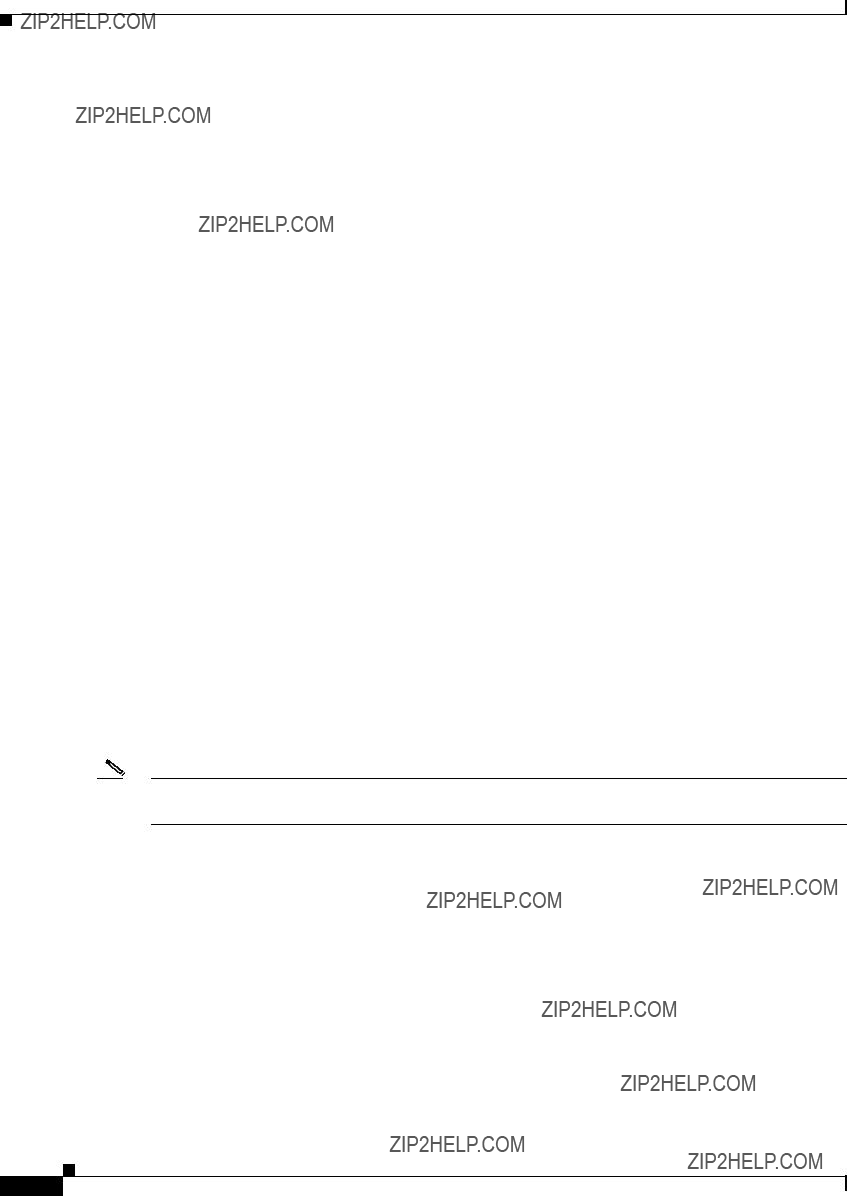
Chapter 3 Configuring and Managing the IP Camera
Status Windows
Network Window
The Network window displays information about various IP camera network settings and operations. You configure the settings as described in the ???Basic Setup Window??? section on page
To display the Network window, access the configuration windows as described in the ???Accessing the IP Camera Windows??? section on page
To make sure that the Network window shows the most current information, click the Refresh button.
Table
Syslog & Log Window
The Syslog & Log window lets you manage the IP camera log file, which captures and stores information about the IP camera and its activities.
The IP camera captures the information that you specify and stores the log file in its internal SDRAM. If the SDRAM becomes full, the IP camera begins to overwrite existing information. To prevent this situation, configure the IP camera to send log information to a Syslog server and periodically clear log information from SDRAM manually by using the Clear Log option in the Syslog & Log window.
Note The camera also maintains a video log file. For more information, see the ???Video Log Window??? section on page
To display the Syslog & Log window, access the configuration windows as described in the ???Accessing the IP Camera Windows??? section on page

Chapter 3 Configuring and Managing the IP Camera
Status Windows
Table
Table

Chapter 3 Configuring and Managing the IP Camera
Status Windows
Table
Table
System log messages.
Note These messages appear if you enable the System Log option.

Chapter 3 Configuring and Managing the IP Camera
Status Windows

Chapter 3 Configuring and Managing the IP Camera
Status Windows

Chapter 3 Configuring and Managing the IP Camera
Status Windows
Web: User logged out from web UI. [id: User_ID,
ip: Address]
FTP log messages.
Note These messages appear if you enable the FTP Log option.
FTP: Error during the connection or timeout.
[host: Address]
FTP: File uploading failed. [host: Address]
FTP: File uploaded successfully. [host: Address]
FTP: Login failed. [host: Address]
FTP: No such remote path. [host: Address]
FTP: Unknown FTP server. [host: Address]
Provide information when the camera uploads a video file to the FTP server.
Address is the IP address of the FTP server.

Chapter 3 Configuring and Managing the IP Camera
Status Windows
Table
SMTP log messages.
Note These messages appear if you enable the FTP Log option.
SMTP: Error during the connection or timeout.
[host: Address]
SMTP: Invalid sender address. [host: Address]
SMTP: POP before SMTP authentication failed.
[host: Address]
SMTP: Recipient address. [Address] rejected
SMTP: Send
SMTP: SMTP authentication failed. [host:
Address]
SMTP: Unknown SMTP server. [host: Address]
Provide information when the IP camera generates an
Address is the IP address of the SMTP server.
Video Log Window
The View Video Log window lets you manage video files. If the Trigger Event option is enabled in the Event window, the IP camera creates a video file for each event that it detects. The Video Log window lists each video file, and lets you view, download, or delete the files.
The IP camera stores video log files in its internal SDRAM. When the SDRAM becomes full, the IP camera stops storing additional video files or begins overwriting the oldest video files, depending on the setting of the Overwrite/Replace oldest video file when SDRAM is full option in the Event window. (See the ???Event Window??? section on page
To prevent the SDRAM from becoming full, periodically delete video logs.
To display the View Video Log window, access the configuration windows as described in the ???Accessing the IP Camera Windows??? section on page

Chapter 3 Configuring and Managing the IP Camera
Status Windows
Table
Table

Chapter 3 Configuring and Managing the IP Camera
Status Windows

C H A P T E R 4
Viewing Live Video
After you install and set up the Cisco Video Surveillance IP Camera as described in Chapter 2, ???Getting Started,??? users can connect to the IP camera through Internet Explorer and access the Home window to view live video from the IP camera.
The home window also provides for controlling the video display and certain IP camera functions. Available controls depend on the user type or privilege level. The IP camera administrator and users with the administrator or monitor privilege can access all controls in the Home window. IP camera users with the viewer privilege can access only the resolution, digital zoom, snapshot, speaker on/off, speaker volume, microphone on/off, and microphone volume controls. (For detailed information about user types and privileges, see the ???Users Window??? section on page
You also can configure the IP camera to allow access to its video through a mobile device, or through the VLC media player or equivalent software.
This chapter includes these topics:
???Viewing Video through the Home Window Overview, page
???Viewing Video through
Viewing Video through the Home Window Overview
To view live video, access the Home window as described in the ???Accessing the IP Camera Windows??? section on page
Home Window Overview
Figure
Note The controls that you see in the Home window depend on your user type or privilege level and the configurations settings for the IP camera.
Cisco Video Surveillance 2600 IP Camera User Guide

Chapter 4 Viewing Live Video
Viewing Video through the Home Window Overview
1Digital zoom controls. For detailed information, see the ???Home Window Controls??? section on page
2IP camera date and time. You configure the date and time for the IP camera as described in the ???Basic Setup Window??? section on page
3Audio controls. For detailed information, see the ???Home Window Controls??? section on page
4Snapshot controls. For detailed information, see the ???Home Window Controls??? section on page
5Text that you configured to display for the IP camera. You configure this text in the Enable Text Display field in the Video window. For more information, see the ???Video Window??? section on page
6Video from the IP camera.
7Number of users who are accessing the camera through web browsers.
8IP camera controls. For detailed information, see the ???Home Window Controls??? section on page
Cisco Video Surveillance 2600 IP Camera User Guide

Chapter 4 Viewing Live Video
Viewing Video through the Home Window Overview
Home Window Controls
The Home window provides controls for several IP camera features. Table
Cisco Video Surveillance 2600 IP Camera User Guide

Chapter 4 Viewing Live Video
Viewing Video through the Home Window Overview
IP camera controls
Cisco Video Surveillance 2600 IP Camera User Guide

Chapter 4 Viewing Live Video
Viewing Video through the Home Window Overview
Cisco Video Surveillance 2600 IP Camera User Guide

Chapter 4 Viewing Live Video
Viewing Video through
Viewing Video through
You can allow users to access video streams from the IP camera through
To do so, you must configure the RTSP Port option in the Advanced Setup window. This option enables the IP camera to receive
To access a primary H.264 stream, configure Single H.264 Stream, Dual H.264 Streams, or Dual Streams (H.264 + MJPEG) for the Streaming Mode option in the Video window. These settings lets you enable a primary H.264 video stream, which is useful for providing
To access a secondary H.264 stream, configure Dual H.264 Streams for the Streaming Mode option in the Video window. This setting lets you enable a secondary H.264 video stream, which is useful for providing
To access a primary
To access a secondary
To access an MJPEG stream, configure Single MJPEG Stream or Dual Streams
This section provides examples for how to access various video streams. For related information, see
Cisco Video Surveillance API Reference Guide.
Cisco Video Surveillance 2600 IP Camera User Guide

Chapter 4 Viewing Live Video
Viewing Video through
Accessing the Primary H.264 Stream
In the following commands, the ip_address argument represents the IP address of the IP camera. After you enter the command, enter your IP camera user name and password when prompted.
???To access the primary H.264 stream with video and audio, enter this command: rtsp://ip_address/img/h264media.sav
???To access the primary H.264 stream with video only, enter this command: rtsp://ip_address/img/h264video.sav
Accessing Secondary H.264 Stream
In the following commands, the ip_address argument represents the IP address of the IP camera. After you enter the command, enter your IP camera user name and password when prompted.
???To access the secondary H.264 stream with video and audio, enter this command: rtsp://ip_address/img/h264media2.sav
???To access the secondary H.264 stream with video only, enter this command: rtsp://ip_address/img/h264video2.sav
Accessing the Primary
In the following commands, the ip_address argument represents the IP address of the IP camera. After you enter the command, enter your IP camera user name and password when prompted.
???To access the primary
???To access the primary
Accessing Dual
In the following commands, the ip_address argument represents the IP address of the IP camera. After you enter the command, enter your IP camera user name and password when prompted.
???To access the primary
???To access the primary
???To access the secondary
???To access the secondary
Cisco Video Surveillance 2600 IP Camera User Guide

Chapter 4 Viewing Live Video
Viewing Video through
Accessing the MJPEG Stream
In the following commands, the ip_address argument represents the IP address of the IP camera. After you enter the command, enter your IP camera user name and password when prompted.
???To access the MJPEG stream with video and audio, enter this command: rtsp://ip_address/img/jpgmedia.sav
???To access the MJPEG stream with video only, enter this command: rtsp://ip_address/img/jpgvideo.sav
Accessing Dual Streams (H.264 + MJPEG)
In the following commands, the ip_address argument represents the IP address of the IP camera. After you enter the command, enter your IP camera user name and password when prompted.
Dual Stream (H.264 + MJPEG):
???To access the H.264 stream with video and audio, enter this command: rtsp://ip_address/img/h264media.sav
???To access the H.264 stream with video only, enter this command: rtsp://ip_address/img/h264video.sav
???To access the MJPEG stream with video and audio, enter this command: rtsp://ip_address/img/jpgmedia.sav
???To access the MJPEG stream with video only, enter this command: rtsp://ip_address/img/jpgvideo.sav
Accessing Dual Streams
In the following commands, the ip_address argument represents the IP address of the IP camera. After you enter the command, enter your IP camera user name and password when prompted.
???To access the
???To access the
???To access the MJPEG stream with video and audio, enter this command: rtsp://ip_address/img/jpgmedia.sav
???To access the MJPEG stream with video only, enter this command: rtsp://ip_address/img/jpgvideo.sav
Cisco Video Surveillance 2600 IP Camera User Guide

C H A P T E R 5
Troubleshooting
This chapter describes some common problems that may be encountered while using the IP camera and provides possible solutions.
Symptom Cannot connect to an IP camera through a web browser.
Possible Cause You are not using a supported PC operating system or web browser, you entered an incorrect IP address for the IP camera, the PC that you are using is not on the same LAN as the IP camera, you are entering an invalid port number for an HTTP or HTTPS connection, or you are trying to access the IP camera from a device with an IP address that is restricted from access.
Recommended Action Make sure that you are using a PC that is running Microsoft Windows 2000, XP, or Vista and that your are using Internet Explorer 8.x or later. Make sure that you enter the correct IP address. If you are connecting through a LAN, make sure that the PC is on the same network as the IP camera. If you are connecting through the Internet, make sure to enter the correct port number. Make sure that the device does not have an IP address that is restricted from access (see the ???IP Filter Window??? section on page
Symptom Cannot log in to the IP camera as the administrator.
Possible Cause You are entering the log in credentials incorrectly or have forgotten the administrator password.
Recommended Action The administrator user name is admin and the password is the one that you configured. Both credentials are case sensitive, so make sure to enter them exactly as they are configured. If you forget the administrator password, you must perform a factory reset as described in the ???Resetting the IP Camera??? procedure on page
Symptom Configuration windows do not display when you click the Setup link in the Main window.
Possible Cause You or another user recently exited the configuration windows by exiting a browser without first clicking the Logout button. In this case, it can take up to 2 minutes before the configuration windows become available.
Recommended Action Wait 2 minutes and try again.
Cisco Video Surveillance 2600 IP Camera User Guide

Chapter 5 Troubleshooting
Symptom The motion detection feature does not send
Possible Cause The
Recommended Action Configure
Symptom The motion detection feature is configured but video files that are provided in
Possible Cause The motion detection feature does not actually detect motion. It compares frames to see if they are different. Major differences between frames are assumed to be caused by moving objects, but the motion detector can also be triggered by sudden changes in light level or movement of the IP camera itself.
Recommended Action Try to avoid situations with sudden changes in light level and do not bump or move the IP camera. The motion detection feature works best when the IP camera is mounted securely in locations where there is steady. This feature may not work properly if the IP camera is outdoors.
Symptom Blurry images when viewing video.
Possible Cause The lens may be dirty, back focus may not be adjusted properly, or video settings may not be configured for optimal clarity.
Recommended Action Clean the lens on the IP camera. Adjust the back focus as described in the ???Adjusting Back Focus on the IP Camera??? section on page
Cisco Video Surveillance 2600 IP Camera User Guide

A P P E N D I X A
Using the IP Camera with Cisco VSM
Cisco Video Surveillance Manager (VSM) is a suite of powerful and flexible video surveillance applications that interoperate with a wide range of devices and cameras to provide a complete,
The following guidelines apply when you use the IP camera with VSM:
???Obtaining the Required Driver Pack
To use the IP camera with VSM, you must download and install a driver pack. For information about this driver pack, refer to your VSM documentation, which is available here:
http://www.cisco.com/web/solutions/ps/products.html#netcentric
???The IP camera must be installed and configured as described in Chapter 2, ???Getting Started.???
???You must to create a separate user account with administrator privileges for each Media Server. Configuration connections for a Media Server are limited just as they are for user sessions. Viewing and managing video streams from VSM requires
For information about how to configure a user account, see the ???Video Window??? section on page
???A user with administrator privileges cannot be logged in to the IP camera and use VSM at the same time
???Cisco recommends that you configure video resolution (NTSC or PAL) from the IP camera configuration windows.
For instructions, see the ???Video Window??? section on page
Cisco Video Surveillance 2600 IP Camera User Guide

Appendix A Using the IP Camera with Cisco VSM
Cisco Video Surveillance 2600 IP Camera User Guide

A
I N D E X
B
back focus adjusting
backing up, configuration of IP camera
Bonjour, enabling on camera
C
camera
See IP camera
CDP (Cisco Discovery Protocol), enabling on camera
Cisco Video Surveillance IP Camera
See IP camera
Cisco Video Surveillance Manager (VSM), using IP camera with
Cisco Video Surveillance 2600 IP Camera User Guide

Index
Cisco Video Surveillance 2600 IP Camera User Guide
D

Index

Index
G
gateway, for IP camera
General purpose input/output (GPIO) port
H
H.264
hardware version, of IP camera
I
I/O ports
See input ports, and see output ports Image window
Initialization window options
Cisco Video Surveillance 2600 IP Camera User Guide

Index
Cisco Video Surveillance 2600 IP Camera User Guide

Index

Index
reset
factory default values
restoring, factory default configurations
S
Cisco Video Surveillance 2600 IP Camera User Guide
SSH, allowing access through
start time, day/night vision night schedule mode
subnet mask, of IP camera
Syslog
Syslog & Log window
description
System window options
T
terminal block
tilt speed
time out, of configuration windows
time zone, of IP camera
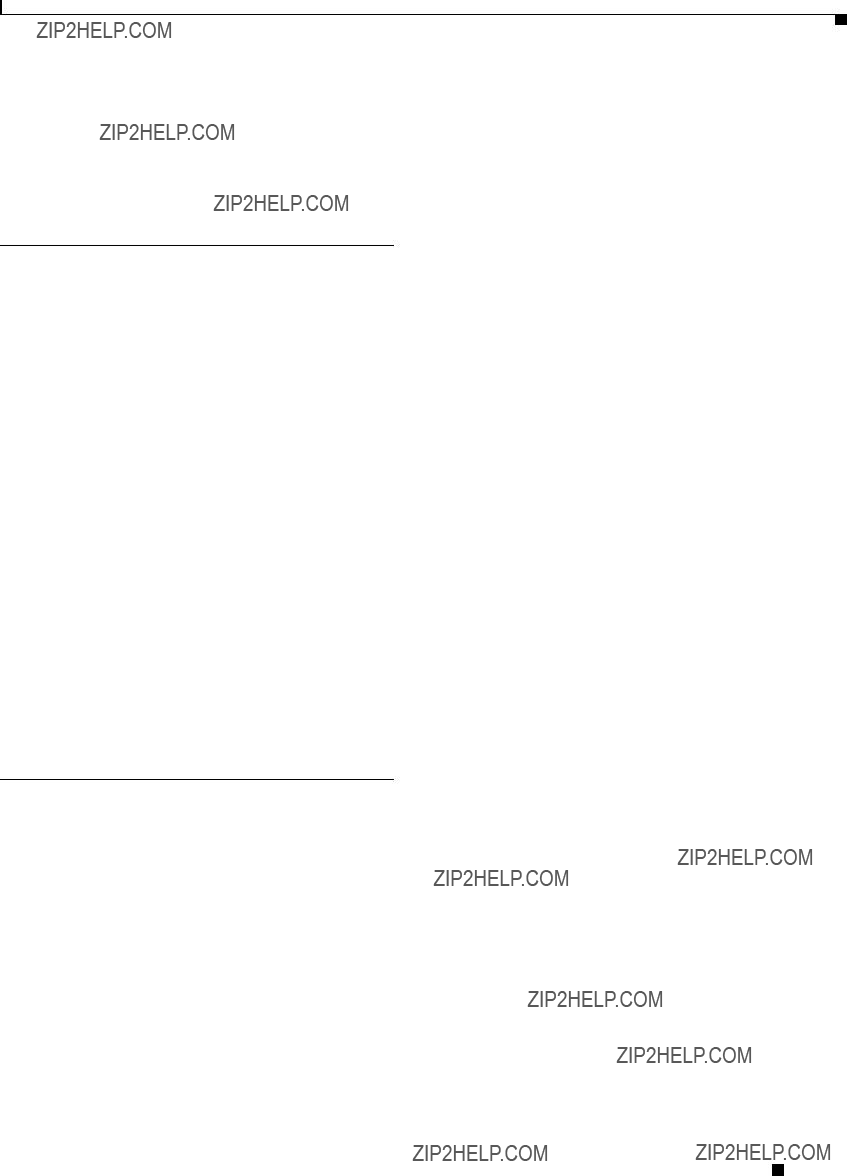
Index
administrator password recovery
cannot access IP camera through browser
U
V
validation time, day/night vision auto mode
analog display, installing
VLC media player, viewing video through
Cisco Video Surveillance 2600 IP Camera User Guide